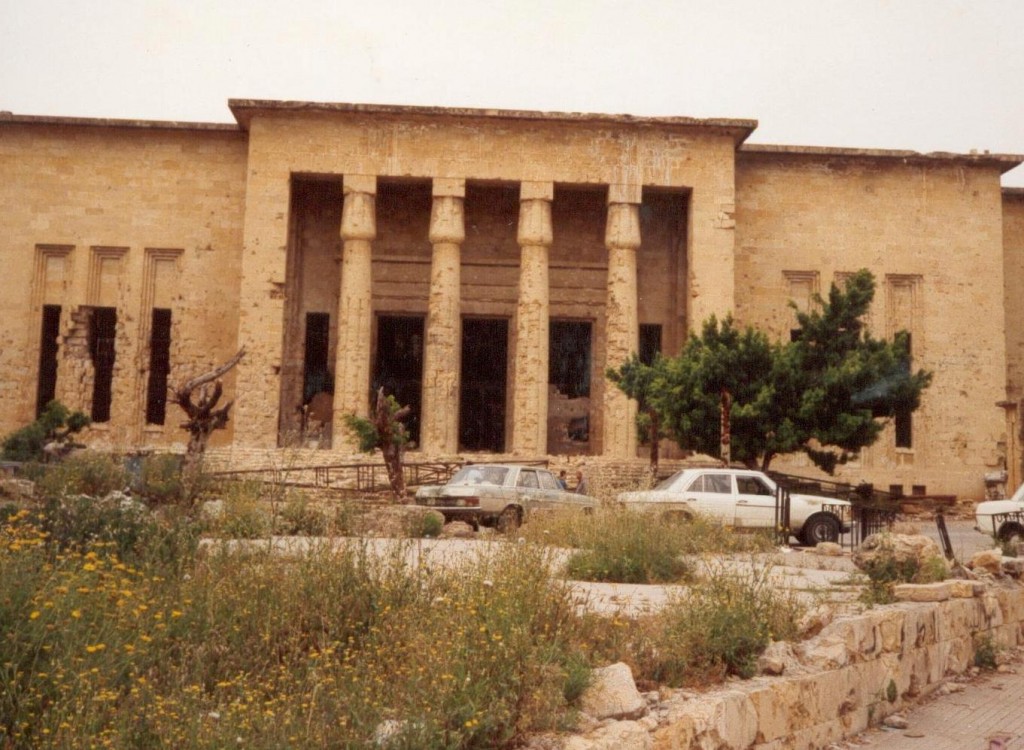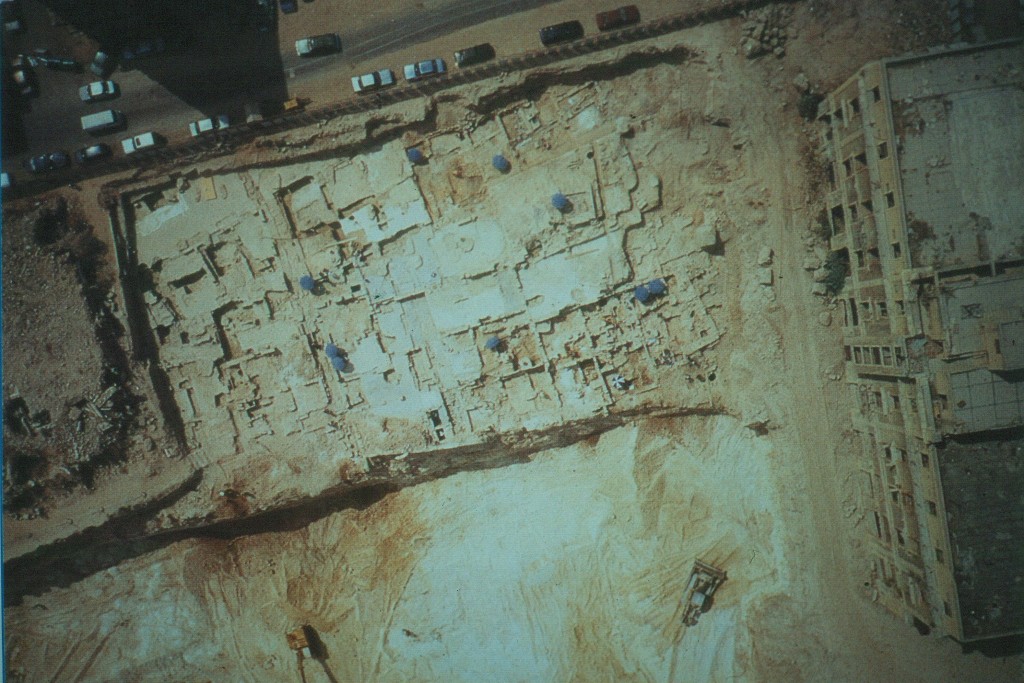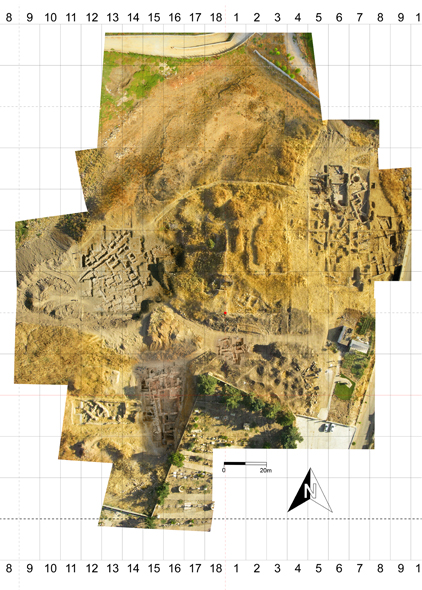
Figure 1. Beirut National Museum was badly damaged during the Lebanese Civil War. Photo courtesy Suzy Hakimian
By: Hélène Sader
Lebanon has a long and very rich past, but in spite of the country’s wealth of ancient settlements, compared to neighboring countries archaeological research is far behind. While in the last decades archaeological research has greatly enhanced our understanding of Syria’s, Jordan’s, and Palestine’s past, Lebanon appears to be lagging behind and its ancient history, with the exception maybe of prehistory, is almost terra incognita.
One reason is Lebanon’s antiquities laws. Archaeology in Lebanon is governed by the 1933 law on antiquities, clauses of which have been suspended or changed by ministerial decisions. The law establishes the Lebanese Directorate General of Antiquities (DGA) as the sole authority in charge of the oversight and organization of archaeological activity, the protection of archaeological sites and historical monuments, and the creation and curatorship of archaeological museums. The law also stipulates that universities and specialized institutes—not individuals—can be granted excavation or survey permits.
But politics are built in. An application for a project is addressed to the Director General. If he deems it acceptable, he transmits it to the Minister of Culture who presents it to the Lebanese Council of Ministers for approval. A dig permit is normally for a period of three years, renewable for another three years up to a maximum of twelve years. Survey permits need approval of the Director General only. Joint excavations with the DGA as well as excavations run by the latter do not need governmental approval.
The DGA, designed and regulated by a 1966 law, cannot possibly meet the challenges of modern archaeological research. This law reflects the erroneous and outdated view the authorities had of archaeology: it limits the executive cadre of the DGA to five archaeologists, five trainee archaeologists, and five architects in charge of regular and salvage excavations, restoration and conservation of historical and archaeological monuments, and the curatorship of the national and regional museums collections! It also neglects to create positions in scientific fields of archaeology. With such a small cadre of professionals it is little wonder that the DGA has not been able to promote and to develop archaeological research.
What made the situation even worse is that the DGA failed to encourage international teams of archaeologists to come to Lebanon to supplement its qualified personnel. Only a few long term excavations and surveys were conducted by international teams, mainly in fringe areas such as the Akkar district and Biqa’ Valley. As a result, the country was not systematically surveyed and DGA activity, with the exception of the important sites of Byblos, Sidon, Tyre, and Baalbek, was practically restricted to salvage excavations. There are still no means to assess the damage incurred by Lebanese archaeology during the 1975 to 1991 civil war.
The DGA and the nearby Beirut National Museum, located on the front line separating the fighting factions, were the first victims of that war (see Fig 1). Archaeological fieldwork came to a standstill but with increased insecurity, illegal excavations prospered and fed the antiquities market with looted finds. Worst of all, anarchic urbanization in areas away from the fighting destroyed ancient settlements. This situation is particularly tragic in the mountains north of Beirut and on the coast.
In the aftermath of the war, in the early 1990’s, the politics of the DGA were very clear. Priority was given to the rebuilding of the offices and the Beirut National Museum, opening the sealed storage areas where artifacts were hidden, and the latter’s inventory. Dig and survey permits were suspended because the institution could not cope with new excavations and new finds before putting its existing facilities in order and before increasing the number of professional archaeologists.

Figure 2. Aerial photograph of the Beirut Central District excavations, the Old Souks Area BEY 006, Photo courtesy DGA.
The Lebanese government had, however, a different priority: the rebuilding of the Beirut Central District (see Figure 2). This project forced the DGA to face the challenge of supervising the largest urban excavation site in the world with practically no qualified personnel, no funds, and no political support. The DGA was too weak to oppose the governmental reconstruction project. In order to palliate this situation, it launched an international appeal inviting all local and international institutions to participate in the rescue excavations in the city center. The aim was to excavate areas where the infrastructure was to be rebuilt. This work yielded very interesting finds but it was done under time and financial pressure and there were several incidents between the developers and archaeologists, militant civilians, and the DGA. As for the rest of Lebanon, no new excavation permits were issued and no new archaeological projects were started. The Tell Arqa and Tell Kamid el-Loz excavations were the only ones allowed to continue because they had pre-war permits (see Figure 3).
When the excavation of the infrastructure areas of the Beirut Central District came to an end, the DGA took over all the salvage excavations in the city and it started considering applications from international teams for new archaeological projects outside the capital. In the late 1990’s Sidon’s “College Site,” the Tyre el Bass, the Chhim/Jiyye, and the Baalbek archaeological projects were begun. This positive trend ended inafter a dramatic change of leadership at the DGA that resulted from the imprisonment of the Director General and the appointment of a new one. Since then, for unclear reasons, the DGA has become extremely restrictive regarding long term excavation projects.
The DGA occasionally rejects survey and excavation applications on the grounds of Lebanon’s precarious security situation and that archaeological projects indicate the presence of remains to looters. Another argument is that certain parties will not tolerate the presence of foreigners in “sensitive” areas and that their safety cannot be ensured. Sometimes applicants simply wait in vain for an answer. These arguments, which are undeniably true in some instances, are contradicted by the facts in others. Foreign archaeologists have been working without interruption or incident in such sensitive areas as south Lebanon, the Akkar district, and the northern and central Biqa’ valley. As for looting of archaeological sites, they have been pillaged and destroyed for years; locals do not need archaeologists to spot sites!
In reality, what seems to lie behind the restrictive policy is not so much the security situation but rather an undeclared “nationalistic” attitude. The new DGA administration gives the impression that it wants to keep Lebanese archaeology in the hands of locals, chosen, closely supervised, and monitored by DGA officials. It is therefore reluctant to issue permits to foreign institutions. This policy has been detrimental for Lebanese archeology because it obstructed archaeological research and interaction with international scholars instead of encouraging and promoting them.
To sum up: this policy has had harmful effects on Lebanese archaeology. It has discouraged international archaeologists from participating in archaeological work in Lebanon. It has stopped the development of archaeological research in the country. And third, rescue excavations are subcontracted almost exclusively to free-lance, often inexperienced Lebanese archaeologists, seconded by Lebanese students with no experience at all.
The DGA tried to cope the best it could with the overwhelming number of salvage excavations due to urbanization and infrastructure projects all over the country, but its politics raises questions about the rigor of the work undertaken. In the absence of publications, there is no way to judge whether these are properly conducted and whether their results are correctly interpreted. Not only do these excavations remain unpublished, they are also often kept secret and hidden from the public instead of opening them to attract people and involve them in the rescue of their past. This secrecy raises suspicions and leads to serious misunderstandings. It is only through rumors or controversial opposition to developers or the DGA that the public learns about salvage excavations. Such controversies erupt regularly in the newspapers and concern mainly the preservation of excavated remains in Beirut’s city center. Unfortunately, debates are often distorted by local politics, and the Lebanese public by and large is more concerned with the political debates around archaeological remains rather than the archaeology itself. The farther one goes from the capital, the lesser the interest of the public in archaeology. Dozens of salvage excavations are taking place outside Beirut but they are almost totally ignored and sites are regularly bulldozed or disfigured by irresponsible urban planning without any objections.

Figure 4. The Tell el Burak Archaeological Project is one of the very few projects taking place in Lebanon today, Photo courtesy CDR
Although this restrictive policy was never officially declared or endorsed by the Ministry of Culture, it is nevertheless obvious if one looks at the excavations running today in Lebanon. With the exception of a few (less than ten) long term projects in which international institutions are involved (see Figure 4), the remaining archaeological operations are almost exclusively salvage excavations run by the department of antiquities and subcontracted to freelance Lebanese archaeologists. Contrary to what is generally believed, there are a very large number of salvage excavations going on all over the country but very few people are aware of them. Unless published, scholars will continue to ignore their existence and their results.
The DGA used to inform the scholarly world of accidental discoveries and ongoing excavations in the “Chronique” that was issued in the Bulletin du Musée de Beyrouth. Today, the results of salvage excavations are threatened with total loss of information: after almost two decades of excavating tens of sites, nobody knows where and what has been excavated and there is little hope that any of these sites will be properly published. This is the heaviest price that Lebanese archaeology will have to pay for the politics of the DGA.
As for public awareness, with the exception of a few civil society activists, the Lebanese people in general do not care about archaeology. They traditionally never did and today they have other, more acute priorities: their safety and economic survival. The majority of the Lebanese people are not aware of the importance of archaeology, which is often synonymous with old stones or which represents, at best, items of lucrative trade. The archaeological heritage as a witness to and source of knowledge of the past, and a shaper of national cohesion and identity, escapes their understanding. The current politics of the DGA, keeping its work secret, discouraging archaeological activity around the country, failing to stop controversies about the fate of archaeological remains by providing clear and scientific explanations, and neglecting the conservation of archaeological sites, does not contribute to enhancing public understanding or in raising interest in the archaeological past.
The DGA has been without leadership for the last four years. The last Director General resigned three years ago and the appointment of a new one is still blocked by political rivalries. The failure to build a new generation of professional and well-trained archaeologists is so dramatic that it is very hard today to find even a small pool of competent candidates for the position of Director General from within or outside the department of antiquities. Several DGA archaeologists and architects have lately resigned out of frustration and it seems that the institution is back to square one: no director general, insufficient numbers of qualified professionals, no reforms of the laws regulating archaeological work, no funds, and first and foremost, no vision and no direction for the future of archaeology in Lebanon.
We keep our fingers crossed that the future leadership of the DGA will have the political and financial support of the Lebanese government to build a modern institution and to promote archaeological research. Maybe then, like a phoenix, Lebanese Archaeology will rise from its ashes.
Hélène Sader is Chair of the Department of History and Archaeology at the American University of Beirut.
If you liked this article please sign up to receive The Ancient Near East Today via email! It’s our FREE monthly email newsletter. The articles will be delivered straight to your inbox, along with links to news, discoveries, and resources about the Ancient Near East. Just go here to sign up.
All content provided on this blog is for informational purposes only. The American Schools of Oriental Research (ASOR) makes no representations as to the accuracy or completeness of any information on this blog or found by following any link on this blog. ASOR will not be liable for any errors or omissions in this information. ASOR will not be liable for any losses, injuries, or damages from the display or use of this information. The opinions expressed by Bloggers and those providing comments are theirs alone, and do not reflect the opinions of ASOR or any employee thereof.

Dear Dr. Seder, Thanks for the informative article about archaeology in Lebanon. I have one question: have you published anymore information on the possible tophet in Tyre? Has anymore work been done to investigate that possibility?
Sincererly,
Henry Smith